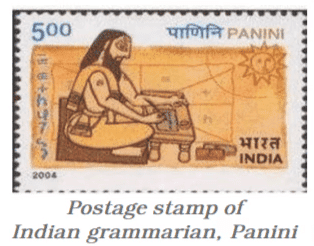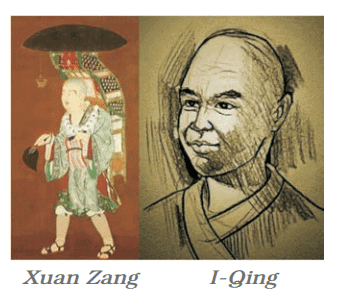NCERT Solution: Ancient Education System of India | English Class 8 PDF Download
Q1: Why were travellers attracted towards India?
Ans: Travellers were attracted towards India as the fame of Indian culture, wealth, religions, philosophies, art, architecture, as well as its educational practices had spread far and wide.
Q2: What were the sources of the ancient education system?
Ans: In ancient education system, the sources of learning were drawn from various disciplines such as Itihas (history), Anviksiki (logic), Mimamsa (interpretation) Shilpashastra (architecture), Arthashastra (polity), Varta (agriculture, trade, commerce, animal husbandry) and Dhanurvidya (archery).The writings of Aryabhata, Panini, Katyayana and Patanjali, and the medical treatises of Charaka and Sushruta also served as the sources of learning.
Q3: What were the features of education system in ancient India?
Ans: Education system in ancient India focused on the moral, physical, spiritual and intellectual aspects of life. It emphasised on values such as humility, truthfulness, discipline, self-reliance and respect for all creations. It focused both on learning and physical development. In other words, the emphasis was on healthy mind and healthy body.
Q4: What was the role of guru in pupils’ lives?
Ans: The role of guru in pupils’ lives was to provide complete learning, help them lead a disciplined life and make them realize their inner potential.
Q5: Where did nuns and monks receive their education?
Ans: Nuns and monks received their education in monasteries or viharas.
Q6: What is Panini known for?
Ans: Panini is known as an expert in language and grammar. He has authored one of the greatest works on grammar called Ashtadhyayi.
Q7: Which university did Xuan Zang and I-Qing study at?
Ans: Xuan Zang and I-Qing studied at Nalanda University.
Q8: Which subject did Xuan Zang study in India?
Ans: Xuan Zang studied yogashastra in India.
Q9: How did society help in the education of the students?
Ans: All members of society contributed to education in various ways. Financial support came from wealthy merchants, affluent parents, and the broader community. In addition to monetary contributions, universities also received gifts of land and buildings, which were vital for their development.
Q10: Which salient features of the ancient education system of India made it globally renowned?
Ans: Our ancient education system focused on the holistic development of the individual by taking care of both the inner and the outer self. The system focused on the moral, physical, spiritual and intellectual aspects of life. It emphasised on values such as humility, truthfulness, discipline, self-reliance and respect for all creations. It focused both on learning and physical development. In other words, the emphasis was on healthy mind and healthy body.
Q11: Why do you think students from other countries came to India to study at that time?
Ans: During this period, many monasteries and viharas were established for monks and nuns to meditate, debate, and engage in discussions with learned scholars. This quest for knowledge fostered the growth of educational centres of higher learning around these viharas. As a result, India became an attractive destination for students from other countries who sought to study.
Q12: Why is education considered 'a way of life'?
Ans: Education is considered 'a way of life' because it provides us with knowledge about the world around us. It helps develop a perspective on how we view life, enabling us to form our own opinions. Additionally, education teaches us important lessons of life.
Q13: What do you understand by holistic education?
Ans: Holistic education focuses on the development of the individual by taking care of both the inner and the outer self. It also focuses on the moral, physical, spiritual and intellectual aspects of life. It emphasises on values such as humility, truthfulness, discipline, self-reliance and respect for all creations.
Q14: Why do you think Takshashila and Nalanda have been declared heritage sites?
Ans: Takshashila and Nalanda have been declared heritage sites by the United Nations Educational, Scientific and Cultural Organization (UNESCO) because these universities were considered among the best centres of learning in the world during ancient times. Takshashila - World Heritage Site
Takshashila - World Heritage Site
|
36 videos|330 docs|56 tests
|
FAQs on NCERT Solution: Ancient Education System of India - English Class 8
| 1. What were the main features of the ancient education system in India? |  |
| 2. Who were the main contributors to the ancient education system in India? |  |
| 3. How did the ancient education system impact society in India? |  |
| 4. What subjects were taught in the ancient Indian education system? |  |
| 5. How did the ancient education system evolve over time in India? |  |






















